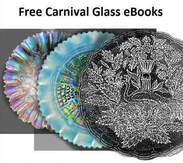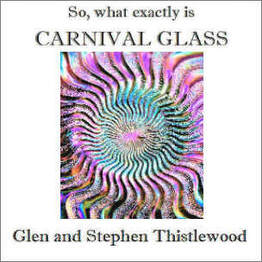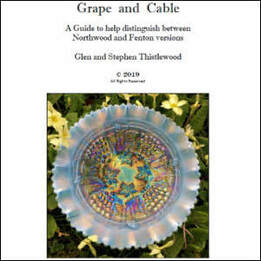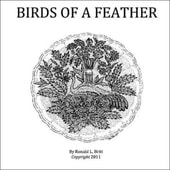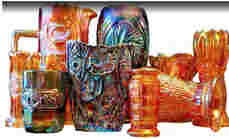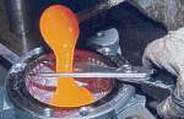Free Carnival Glass eBooks (available online or by download)
|
We are please to present a series of FREE eBooks about Carnival Glass. We hope you enjoy them! "What is Carnival Glass", "Carnival Glass Terms" and "Grape and Cable", are all authored by us and presented in PDF format. They are downloadable from this page - simply click on "Download File" in the description of each eBook. "Birds of a Feather", authored and illustrated by Ronald L. Britt is a six page feature article to be found here on our website. Follow the link which is shown below, at the end of the description of Ronald's wonderful feature. "Features (and defects) of handmade pressed Carnival Glass" by Glass Engineer (the late) Howard Seufer. Howard explains the characteristics of pressed glass, identifying features and defects for what they actually are - characteristics that result from the glass-making processes. Follow the link in the description of Howard's work. |
|
Grape and Cable.
Grape and Cable was an extremely popular pattern in Classic Carnival Glass.
It was made by both Fenton and Northwood. This handy 10 page eBook explains how to distinguish the shapes and colours that were made by these two makers. The eBook is a PDF document that everyone should be able to use. You can download it below - simple click on "Download File" and enjoy!
| ||||||||||||||||||||
|
We have the privilege of hosting Ronald L. Britt’s excellent work, “Birds of a Feather". Presented over 6 Sections of superb, high resolution drawings and detailed pattern features, Ronald shows how to distinguish between Millersburg, Northwood and Fenton versions of “Peacock” and “Peacock & Urn” patterns. This extensive and authoritative work is perfect for studying these wonderful patterns. Our grateful thanks to Ronald – we know that everyone will enjoy his excellent work. There are Six Sections. Be sure not to miss any of them: "Birds of a Feather" |
|
You may be interested in other eBooks that we have authored on Carnival Glass. All the details are on our our eBook Homepage: Glen and Stephen's eBooks, or click on the image (right). |
Further Reading: Features (and defects) of handmade pressed Carnival Glass by Glass Engineer (the late) Howard Seufer, with additional material provided by Glen & Stephen Thistlewood.
|
Click on the image to read
about the features and defects of handmade pressed glass. |
Some of the earliest pieces of Classic Carnival are over 100 years old, so it's not surprising that some will show damage - from the very obvious such as a large chip, to the less significant. Collectors have developed a whole variety of descriptive terms: chip, flake, flea-bite, chigger, rough spot, and even “no-harm” damage. Damage may also have been caused by poor care over the years - over-cleaning or the use of abrasive cleaners which damage the very thin iridescent surface, leaving it open to oxidation and dullness.
However, in "Features (and defects) of handmade pressed Carnival Glass", Howard shares his considerable expertise to explain the characteristics of pressed glass that reflect the way the glass was actually made, at a time when “quality control” was less rigorous than modern-day consumers would expect. Inevitably, some of these features may be thought of as damage or defects, but it's important that collectors can recognise these features and defects for what they actually are - characteristics that result from the glass-making processes. |
